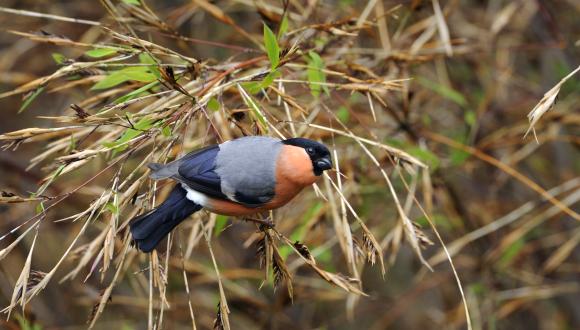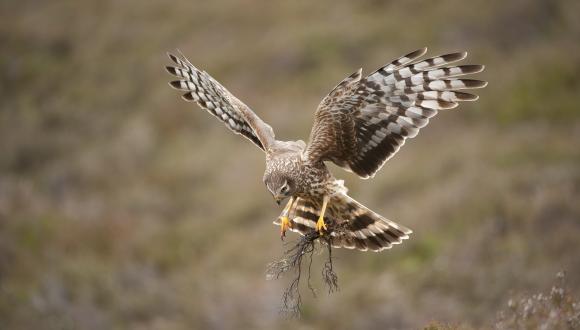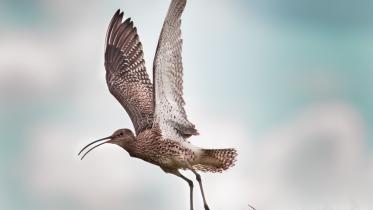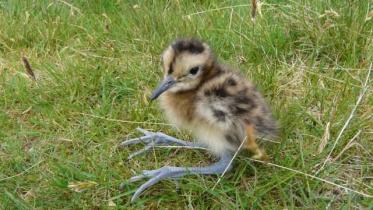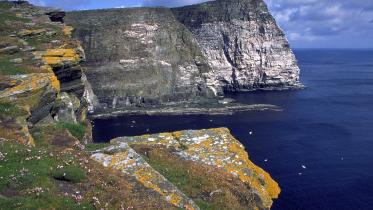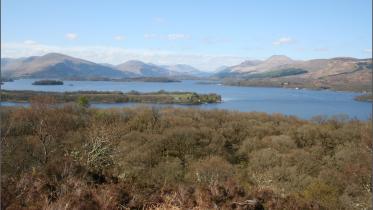Scotland's woodland and farmland birds thrive but upland birds struggle
Scotland's woodland and farmland birds thrive but upland birds struggle
29 November 2018
Scotland's woodland and farmland birds thrive but upland birds struggle
Woodland and farmland birds are thriving in Scotland but upland birds continue to struggle, according to the latest figures.
Official statistics published by NatureScot track the abundance of Scotland’s terrestrial breeding birds using results from the BTO/JNCC/RSPB Breeding Bird Survey.
The report shows woodland birds increasing by 69% between 1994 and 2017 and farmland birds up by 14%. In contrast, upland birds have decreased by 17%.
Among the woodland birds the biggest long-term rises were for chiffchaff, great spotted woodpecker and blackcap.
Blackcaps – a familiar sight for many in gardens during the winter - have benefited from milder conditions with climate change enabling them to extend their range further north.
Birds including tree pipits, willow warblers and song thrush recorded increases of more than 10% between 2016 and 2017.
Some farmland birds, including goldfinch, whitethroat, and great tit, are now more than twice as abundant as in 1994, while others such as magpie and corncrake have also increased by more than 50%.
In the uplands cuckoo, raven and red grouse populations have increased the most since 1994.
However ten of the seventeen upland species surveyed are in significant long-term decline, including curlew and dotterel which have decreased by 62% and 60% respectively.
Climate change and loss of habitat that provides food and cover are factors driving the long-term decline in upland birds.
NatureScot and others are taking action to address this decline, including ambitious habitat restoration work which will help tackle climate change.
Through our Peatland ACTION project, 15,000 hectares of damaged peatland have been put on the road to recovery since 2012, with another 8,000 hectares to follow thanks to additional Scottish Government funding of £8 million in 2017/18.
We are using ground-breaking new mapping technology to gain a better understanding of our diverse upland habitats, helping us to better target this work. These improved peatlands will be an essential boost for struggling upland birds and in particular waders such as curlew and golden plover.
We are also part of the Working for Waders project, working with partners across Scotland to raise awareness and tackle declining wader populations.
Simon Foster, NatureScot’s trends analyst, said: “These latest figures reflect the long-term trends we have seen for Scotland’s breeding birds.
“There is good news for our woodland and farmland birds, with many species continuing to thrive, but in line with previous years upland birds are facing real challenges.
“Upland waders are a real concern and we are working with others to try and help these birds through a range of measures including restoring their breeding habitats.”
Ben Darvill, from the British Trust for Ornithology (BTO) Scotland, said: “It is great to see some of our birds doing so well in Scotland, but it is thanks to the hundreds of volunteers that give up their time to take part in the various surveys that we have such a clear picture of how our birds are doing.
"No-one is quite sure what Scotland will look like fifty years from now. Long-term monitoring helps us to understand the impact of historical changes on our wildlife and, through this, to predict the impact of future changes.
Further information and related links
The full statistical publication can be accessed at: https://www.nature.scot/information-library-data-and-research/official-statistics/official-statistics-terrestrial-breeding-birds
The data used in the report primarily come from the British Trust for Ornithology (BTO), Joint Nature Conservation Committee (JNCC) and Royal Society for the Protection of Birds (RSPB) Breeding Bird Survey (BBS) (http://www.bto.org/volunteer-surveys/bbs)
Official statistics are produced by professionally independent statistical staff in accordance with the Code of Practice for Official Statistics.
